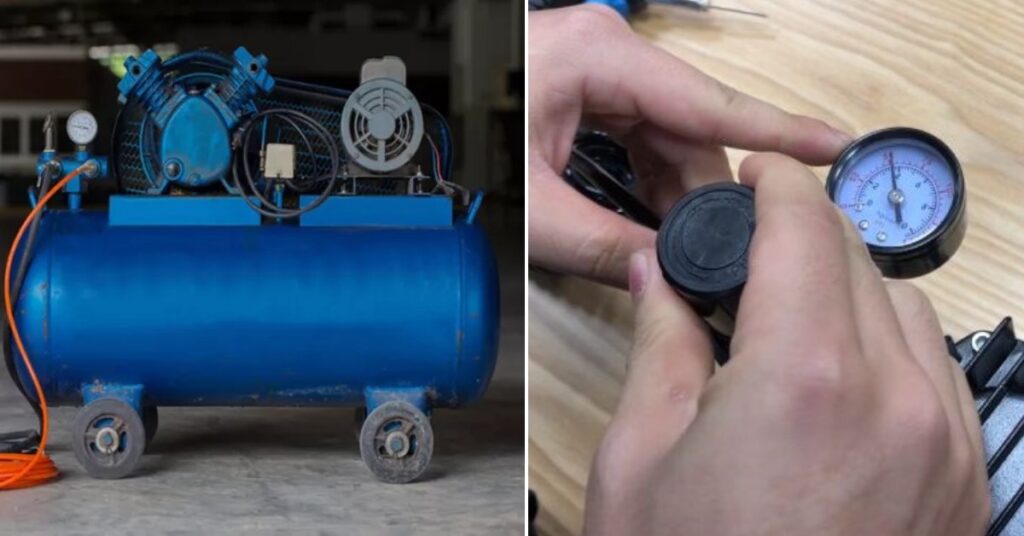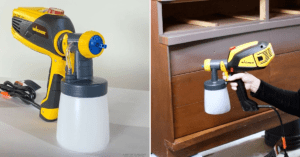How to Increase CFM on Air Compressor
Do you need to increase the CFM (Cubic Feet per Minute) of your existing air compressor? If so, then you’ve come to the right place. In this guide, we’ll provide you with simple and effective advice on how to increase CFM on air compressor without breaking the bank. We’ll explain what kind of modifications can make all the difference between an average system and one that drastically increases airflow production. Whether you’re a seasoned professional or just getting started in home improvement projects, this article has something for everyone. So grab a notepad and let’s get started!

What is CFM and Why Does It Matter?
CFM is a unit of measurement that specifies the volume of air flowing through an air compressor in one minute. This metric is crucial because it determines how much air your compressor can deliver to power pneumatic tools, spray guns, or other equipment. In simple terms, the higher the CFM rating, the more powerful your air compressor will be. So if you want to run multiple tools or equipment simultaneously, you’ll need an air compressor with a high CFM rating.
Understanding Your Air Compressor’s CFM Requirements
Before we dive into the different methods of increasing CFM, it’s essential to understand your air compressor’s current CFM rating and requirements. This information will help you determine how much CFM you need to achieve your desired results. To find the CFM rating of your air compressor, check the manufacturer’s manual or label on the unit itself. Keep in mind that most compressors have two CFM ratings: the displacement CFM and the actual CFM. The displacement CFM is the theoretical maximum output of your compressor, while the actual CFM is the practical output that takes into account factors like air pressure, temperature, and humidity.
How to Measure Current CFM on Your Air Compressor
To measure the actual CFM of your air compressor, you’ll need a tool called an airflow meter. Follow these steps to get an accurate reading:
- Turn off and disconnect all tools and equipment from your air compressor.
- Connect the airflow meter to the end of the hose or fitting on your compressor.
- Turn on the compressor and let it run for at least one minute to reach operating pressure.
- Record the airflow meter’s reading in CFM.
Once you have an accurate measurement of your current CFM, you can determine how much more you need to achieve your desired results. Now let’s explore some ways to increase your air compressor’s CFM rating.
Tools and Materials Needed for Increasing CFM
- Airflow meter
- Piping and fittings
- Pressure regulator
- Air filter
- Larger motor or pulley system (for electric compressors)
- Throttle valve (for gas-powered compressors)
Safety Precautions for Modifying Your Air Compressor
Before making any modifications to your air compressor, ensure that it is turned off and disconnected from all power sources. Follow the manufacturer’s instructions for disassembly and reassembly of parts. Wear proper protective gear, such as gloves and safety glasses, while handling tools and materials. If you’re not comfortable making modifications yourself, consider hiring a professional to ensure the job is done correctly and safely.
9 Easy Ways to Increase CFM on Your Air Compressor
Adjusting the Pressure Settings
The easiest and most cost-effective way to increase CFM is by adjusting the pressure settings on your air compressor. Lowering the pressure can result in a higher CFM output, allowing you to run more tools or equipment simultaneously. However, keep in mind that this method may not work for all types of tools and applications.
Maintaining the Compressor’s Components
Regularly cleaning and replacing worn-out components like air filters and oil can greatly improve your air compressor’s performance. A clogged or dirty air filter can restrict airflow, reducing CFM output. Similarly, old or low-quality oil can cause the compressor to work harder, resulting in lower CFM.
Upgrading Piping and Fittings
Replacing small, narrow piping and fittings with larger ones can significantly increase CFM output. The larger the diameter of the piping, the more air it can deliver to your tools and equipment. Additionally, using smooth-walled pipes instead of corrugated or ribbed ones can also improve airflow.
Installing a Pressure Regulator
A pressure regulator controls the amount of air coming out of your compressor, allowing you to adjust the pressure to your desired level. Installing a pressure regulator can help prevent overworking your compressor and increase CFM output.
Reducing Air Leaks
Another common cause of low CFM is air leaks in the compressor’s piping or fittings. This can significantly decrease airflow and reduce overall performance. Inspect all connections and joints for leaks regularly, and repair or replace any damaged parts.
Adding a Receiver Tank
Installing a receiver tank to your air compressor can increase CFM output by storing compressed air and releasing it when needed. This allows for a more consistent flow of air, making it ideal for applications that require continuous use.
Installing an Intercooler
An intercooler is a heat exchanger that cools the compressed air from your compressor before it reaches your equipment. By reducing the temperature of the air, an intercooler can increase CFM output and improve overall efficiency.
Reducing Line Losses
Properly sizing and installing your air compressor’s piping can significantly reduce line losses, resulting in higher CFM output. Use larger pipes with fewer bends and turns to minimize friction and pressure drops.
Upgrading to a Higher CFM Compressor
The most straightforward solution for increasing CFM is to upgrade to a compressor with a higher CFM rating. This option may be more expensive, but it guarantees that you’ll have the necessary airflow to power your tools and equipment effectively.
3 Advanced Modifications to Increase CFM
There are more advanced modifications that can be made to an air compressor to increase its CFM output. However, these may require professional expertise and should only be attempted if you have experience with air compressors:
- Installing a larger motor or pulley system (for electric compressors)
- Adding a throttle valve or intercooler kit (for gas-powered compressors)
- Upgrading to a two-stage or scroll compressor
Factors to Consider When Increasing CFM
When upgrading your air compressor’s CFM rating, there are a few factors to keep in mind:
- Power source: Make sure your power source (electric or gas) can support a higher CFM compressor.
- Applications: Consider the tools and equipment you will be using and their required CFM.
- Space constraints: A larger compressor may require more space in your workshop or garage.
- Budget: Upgrading to a higher CFM compressor can be costly, so make sure to budget accordingly.
The Role of Maintenance in CFM Output
Regular maintenance is essential in ensuring your air compressor operates at its optimal CFM output. Neglecting maintenance tasks can result in decreased performance, higher energy costs, and even equipment failure. Follow the manufacturer’s recommendations for routine maintenance, and address any issues promptly to keep your air compressor running smoothly. By properly maintaining your air compressor, you can ensure that it continues to deliver the necessary CFM for all your applications.
Troubleshooting Common Issues with CFM
If you’re experiencing low CFM output from your air compressor, here are a few things to check:
- Pressure settings: Make sure the pressure is set at an appropriate level for your tools and applications.
- Air leaks: Check all connections and joints for leaks and repair or replace any damaged parts.
- Maintenance: If you haven’t performed routine maintenance on your air compressor, it may be time to do so.
- Piping and fittings: Consider upgrading to larger pipes or smoother-walled ones to improve airflow.
- Compressor size: If you’re consistently running multiple tools simultaneously, you may need a higher CFM compressor.
FAQs for Increasing CFM on Your Air Compressor
Conclusion
Increasing CFM is a great way to maximize the performance of your air compressor and save money in the long run. Whether you opt for more minor tweaks to achieve greater efficiency or take on some of the more advanced modifications, having a deeper understanding of your compressor’s CFM requirements and measuring existing CFM is essential. Ultimately, the steps taken will help ensure that your air compressor meets all safety requirements and can operate optimally going forward.
For those looking for an even further increase in their air compressor’s power, try exploring these nine easy ways to boost CFM levels from running multiple lines at once to using larger pipes or taking on these three advanced modifications. Now it’s time to get out there, maximize your air compressor’s CFM and start enjoying the savings!






